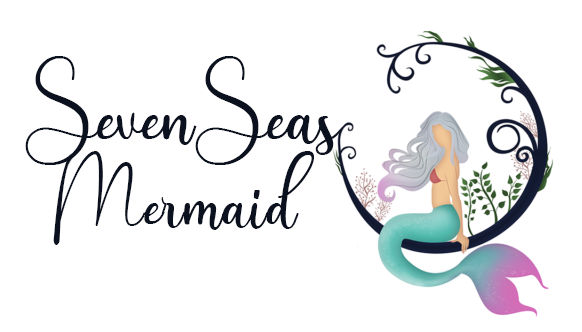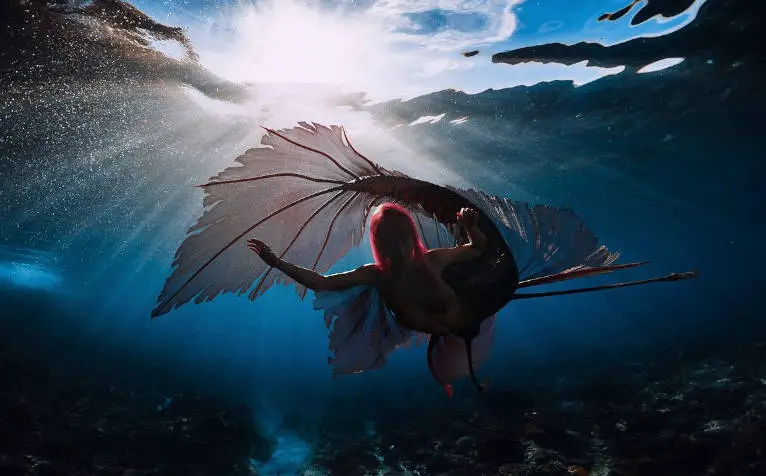In movies and other media, you can often hear of dangerous, demonic, scary and evil mermaids. But in other movies, they are perfectly friendly. When seeing these completely different depictions you can’t help but wonder what is true. Are mermaids evil or friendly?
According to most mythological accounts, mermaids are not dangerous. The idea that mermaids are dangerous comes from the myths of the sirens who were originally different creatures from Greek mythology. Today both of them are often confused, which results in the wrong belief that mermaids are dangerous.
Let’s have a look at the roots of where mermaids come from and why they were friendly, not dangerous. There are however also a few cases in which some mermaids could also have more dangerous sides. I’ll get into that later in the post.
Are mermaids evil or friendly?
Today mermaids are often thought of as both good and bad, both friendly and also incredibly dangerous. These two sides have come to define their characters as fascinating but unpredictable beauties of the sea.
But originally mermaids were mostly friendly creatures that did not have anything to do with murder or mischief.
The most famous mermaid myths come from ancient Greece where their predecessors, the sea nymphs and Tritons, lived. It is believed that their depictions were influenced by the ancient Assyrian mermaid-goddess Atargatis who dates back to around 1000 B.C. She became a beloved deity all over the Mediterranean sea.
The sea nymphs were beautiful, young women who watched over the Mediterranean sea. They often traveled through the sea with the sea god Poseidon/Neptun and when they noticed that a ship was sinking or sailors were in danger somewhere, they would rush to their help.
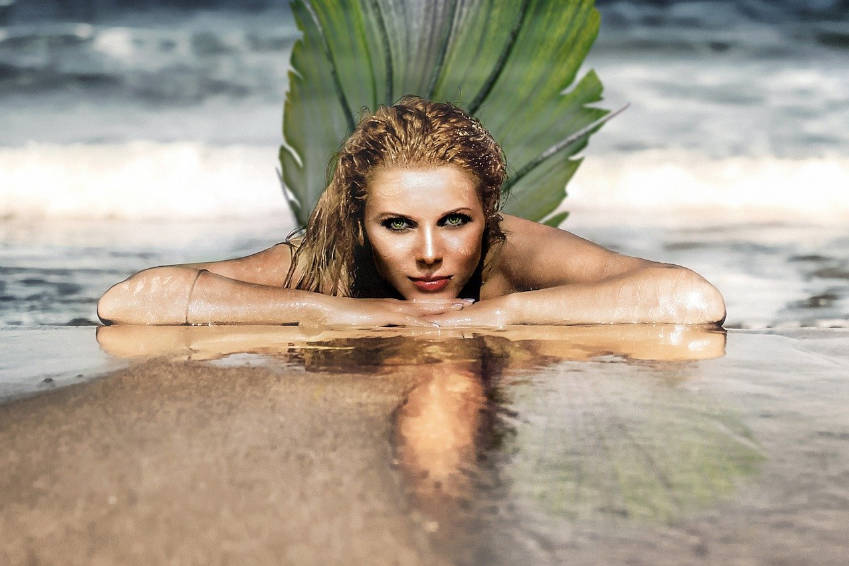
But there were also other creatures with fishtails that were very far from being friendly: the sirens. They actually were portrayed as bird-women originally, but over time they started to be represented more and more similar to mermaids.
They were one of the real dangers of the sea. Instead of saving sailors from drowning, like the sea nymphs, the sirens made them drown on purpose. With their beautiful voices, they lured the sailors close so that their ships crashed into dangerous rocks and they sank.
So, in Greek mythology there was a clear distinction between mermaids and sirens:
| Behavior | Creature |
| Friendly | Mermaids (Sea nymphs) |
| Dangerous | Sirens |
Table: According to Greek mythology mermaids were friendly and sirens dangerous.
This shows us that originally mermaids were not evil or dangerous at all. They simply get confused with the dangerous sirens a lot.
[Related: 17 reasons why sirens are not mermaids]
The evolution of “evil mermaids”
As I mentioned, in ancient Greece mermaids were friendly and sirens dangerous.
But over the centuries and especially during medieval times, the concepts of mermaids and sirens started to merge and mermaids started to be feared as dangerous and demonic creatures around Europe.
The merging of the two creatures presumably began when the sirens, who originally were bird-women, started to be described with fishtails. One of the first mentions of sirens with fishtails was in the Book of Monsters (Liber Monstrorum) from around 700 A.D. [1].
Similar to the sirens in the Odyssey, they were described as dangerous creatures that lurk in the water and sing their beautiful songs to sailors, whom they kill once they come too close.
This idea of men-seducing and killing monsters was widely taken up during the Middle Ages in Europe when the sirens were commonly understood as demonic creatures.
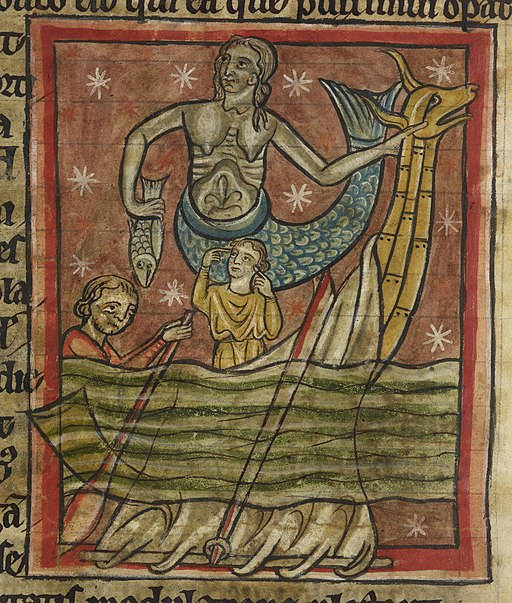
In the Christian belief, they were sinful and outright dangerous. Medieval writers, like Konrad von Mengenberg (in his book of nature, 14th century), also described the sirens as “unvirtuous women who lull men into wickedness”.
During the later medieval time, another scary creature appeared in many books that described the monsters of the time: the sea-devil. They were also called sea-demon or sea satyr:
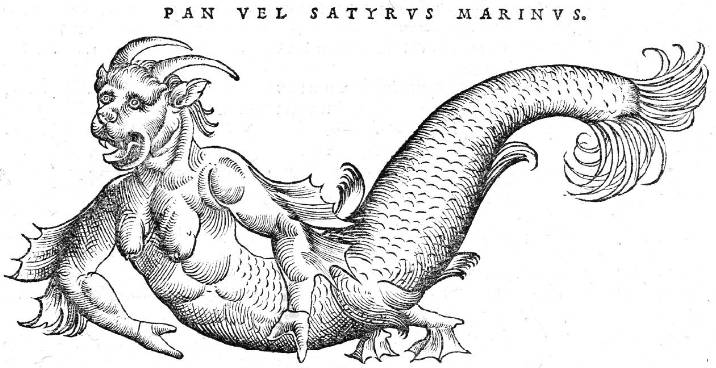
The sea-devils were described as having a goat-like head on a human female-like torso (with pendulous breast), pincer-like hands and a fishtail with small legs.
No wonder, sailors started to get scared in the ocean!
At some point, the idea mermaids (not only sirens) are evil was deeply engraved into people’s minds and in some parts of Europe (e.g. Britain and Scandinavia) seeing a mermaid was even thought to be bad luck.
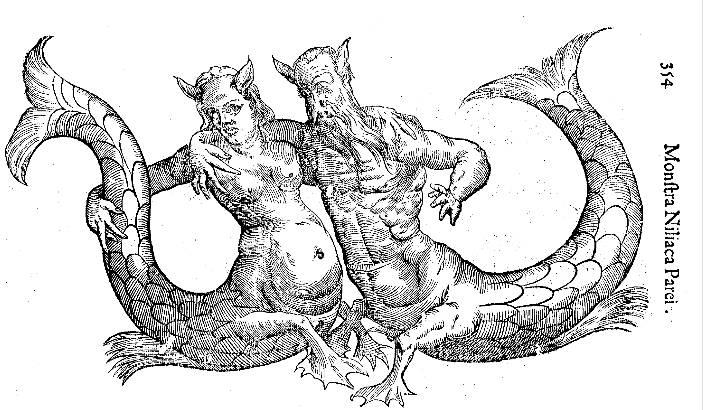
During the 16th century, Olaus Magnus, who made the Carta Marina that cataloged the monsters that lived in the seas around Scandinavia, described that mermaids and mermen sometimes sneak onto ships at night when everyone thinks they are safe. If the mermaids were staying for too long that could even result in the sinking of the ship.
Furthermore catching a mermaid in the nets could supposedly result in a horrible storm and even lead to other sea monsters coming from the depths and showing their wrath.
Why people today still think that mermaids are evil and dangerous
When you look at movies and depictions in media today, you do however see friendly as well as dangerous mermaids. That is because the concepts of mermaids and sirens started to mix during the Middle Ages and today many people are under the impression that they are the same. Thus, in movies and series, whenever a mermaid is dangerous, she is often not called a siren, but a mermaid as well.
This confusion is also reflected in romance languages. In Spanish and the other languages that derive from Latin, the word for mermaid is actually “siren” (e.g. “la sirena” in Spanish). This means they call both friendly mermaids and dangerous sirens “sirens”. So it only makes sense, that the borders between the two creatures started to merge.
If you look at it this way, you could say that mermaids and sirens have become synonyms for each other and because of that you could say that mermaids can be both friendly and dangerous: friendly when they behave like mermaids and dangerous when they behave like sirens.
This is exactly what we can see in many movies and media today and why people get confused about it.
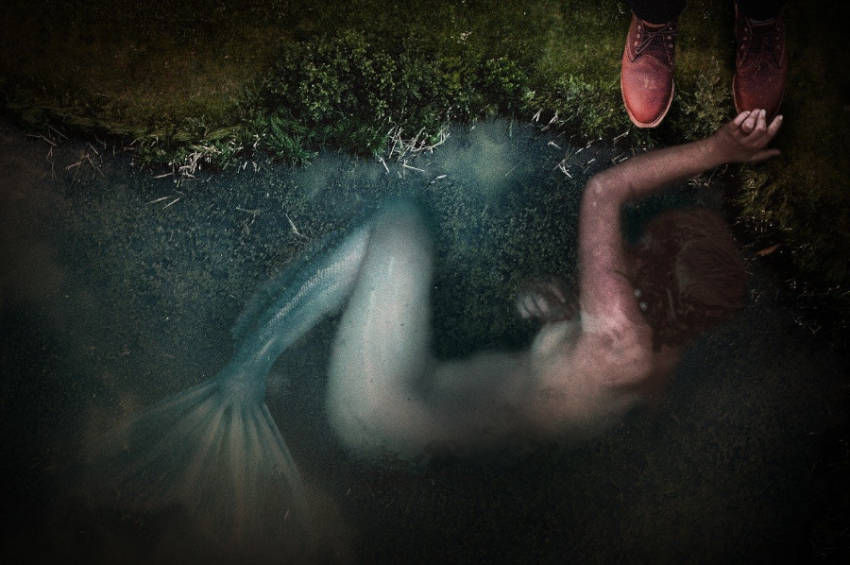
This split can be seen easily in the most popular mermaid movies and series: friendly as well as dangerous mermaids are mostly all called “mermaids”, but the dangerous ones are rarely named after their inspirations, the “sirens”.
| Creature | Movies and series |
| Mermaid | Ariel The Little Mermaid, Splash, H2O and Mako Mermaids, … |
| Siren (aka “evil mermaid”) | Different Mermaid Horror movies (e.g. “the mermaid – lake of the dead” or “mermaid’s song”) |
Table: Mermaids are either portrayed as friendly or dangerous and evil in media today.
The most famous friendly mermaid is certainly Ariel from Disney’s “Ariel, The Little Mermaid”. She is similar to the sea nymphs, in that she saves a drowning person from the ocean: prince Eric. Her family and all other mermaids are also generally friendly in the movie.
Other well-known movies with the typical friendly mermaids are Splash, where the mermaid falls in love with a man and ends up exploring New York City with him and the series H20 and Mako Mermaids.
Dangerous mermaids can mostly be seen in horror movies. There are a lot of such horror movies that include the word “mermaid” in their titles and thus add to the confusion.
These movies might actually be one of the main reasons why people today think that mermaids are evil and dangerous. But they are misleading because their wordings are wrong.
They don’t draw on the original mythology of mermaids, but of sirens or on the beliefs that started in the Middle Ages. So the creatures in these horror movies should actually be called “sirens” or something else completely.
Some mermaids from around the world can have both friendly and dangerous sides
Even though the mermaids who originated in Greek mythology are perfectly friendly, there are mermaid-like creatures from myths from other places on earth, that can sometimes show a dangerous side as well. A good example is Mami Water. She is an African water goddess, who is also known as the African mermaid.
Although she is mostly friendly and helps and heals people, some accounts of her also attest a dangerous side to her. In some parts of Africa, it is believed that she can also bring diseases and be responsible for dangerous parts of the ocean where people drown.
Mami Wata has many counterparts in Africa and the Americas. For example Lasiren, the mermaid of Haiti, often kidnaps women and takes them to her underwater realm. Some of them disappear forever and some of them return with magical powers that Lasiren decided to teach them.
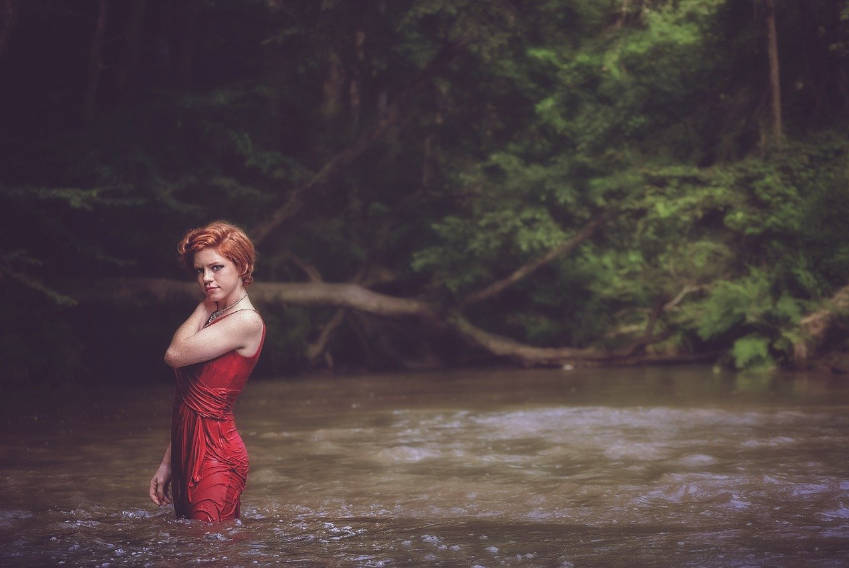
Other water spirits that can be both good and bad are the Nixies from Germanic and Nordic mythology. They were known for abducting children and people who fell into the rivers and lakes they lived in.
But they also had friendly sides. The young Nixie daughters were known to go on land to attend dances and festivals in nearby places where they would mingle with the humans. In some stories, some would even marry human men.
[Related: What is the difference between mermaids, nymphs, sirens and nixies.]
References:
[1] Kraß, Andreas (2010). Meerjungfrauen – Geschichten einer unmöglichen Liebe. FISCHER E-Books. (in German)
